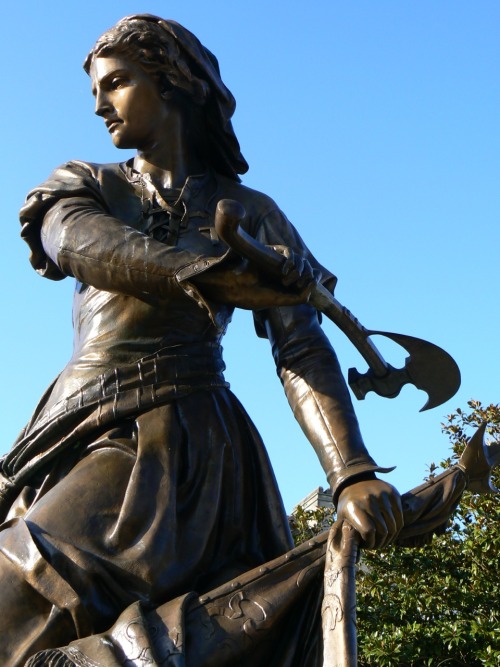#beauvais
Decorative Sunday
This Sunday we bring you plates from German art historian Elisabeth Von Witzleben’sFrench Stained Glass, translated from German (Licht und Farbe aus Frankreichs Kathedralen,1966) into English by Francisca Garvie. Published in London by Thomas and Hudson, Ltd. in 1968 and printed in what was then West Germany, the book contains 96 black-and-white plates, and 46 color plates printed on what appears to be acetate sheets with frosted backing. Presenting the plates in this medium cleverly approximates the experience of viewing the glass in it’s natural setting, the sheen of the acetate simulating the reflective surface of the glass and the transparency allowing the viewer let light shine through the image.
See image captions for more information about the plates, including location, content, and date.
ViewmoreDecorative Sunday posts here.
-Olivia,Special Collections Graduate Intern
Post link
Jeanne Laisné (nicknamed Jeanne Hachette - ‘Jean the Hatchet’).
Born 1456 - died ?
Claim to fame: a French military heroine who prevented the capture of Beauvais.
In June of 1472 Charles the Bold, Duke of Burgundy, laid siege to the French town of Beauvais. Over the course of the three week siege, a peasant woman named Jeanne Laisne joined a contingent of women and children responsible for loading the town’s cannons, delivering munitions and dumping boiling liquid over the walls onto the attackers.
By 27 June, many of the French defenders had lost hope and begun to flee as an assault from the Burgundians seemed set to defeat the town. An officer was about to plant the Burgundian flag on the wall and claim Beauvais when Jeanne grabbed a hatchet and flung herself upon him, hurling him off the wall and tearing down the flag. Her bravery revived the courage of the garrison and the French soldiers returned to their posts, keeping the Burgundians at bay until reinforcements arrived and the town was saved.
By way of recognition, King Louis XI heaped favours on Jeanne and ordered for the ‘Procession of the Assault’ to take place in Beauvais every year with women marching at the head of the parade. This tradition still continues.
In 1851, a bronze statue sculpted by Gabriel-Vital Dubray (pictured above) was unveiled in Beauvais by Louis-Napoleon Bonaparte.
Post link











